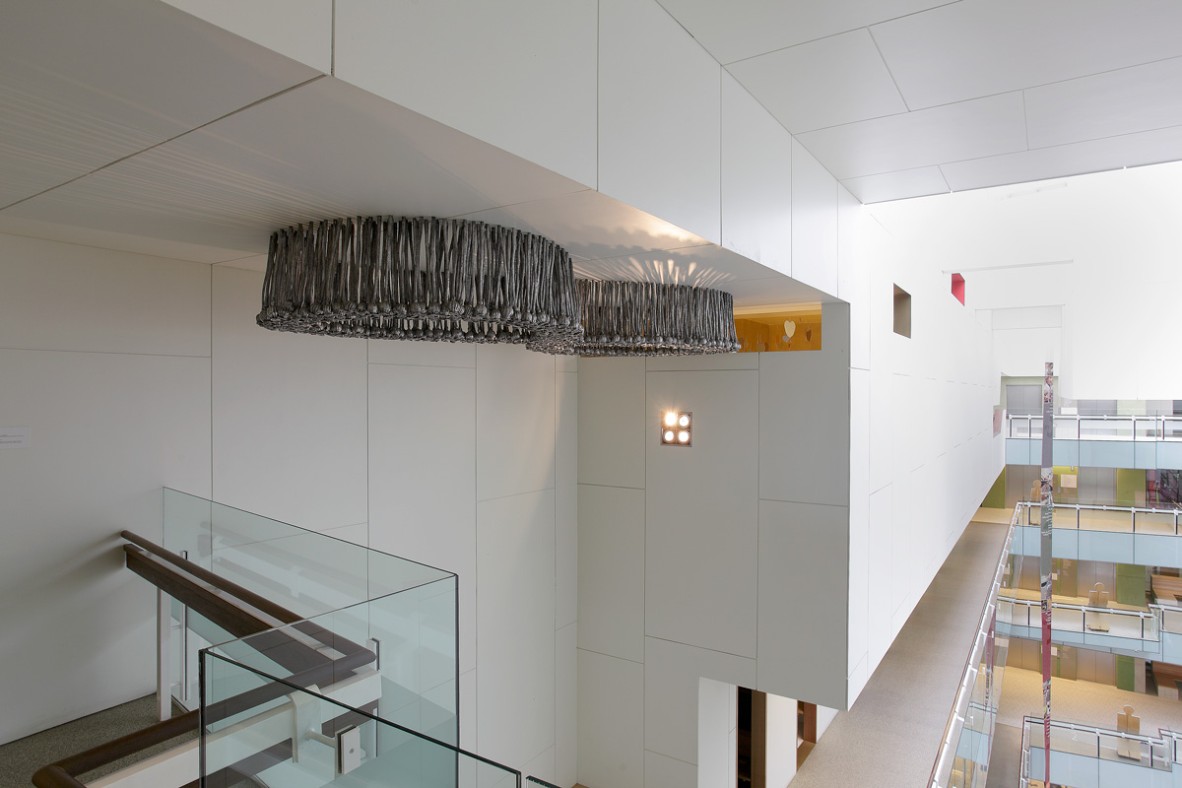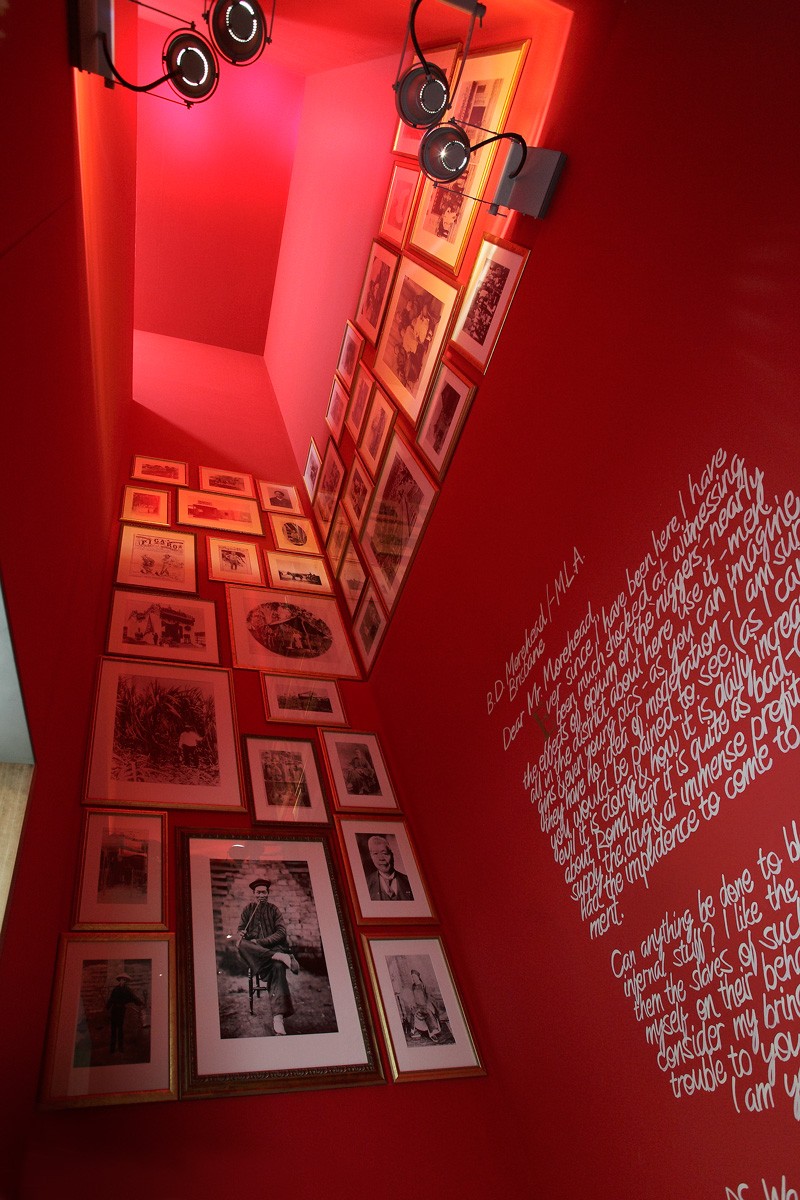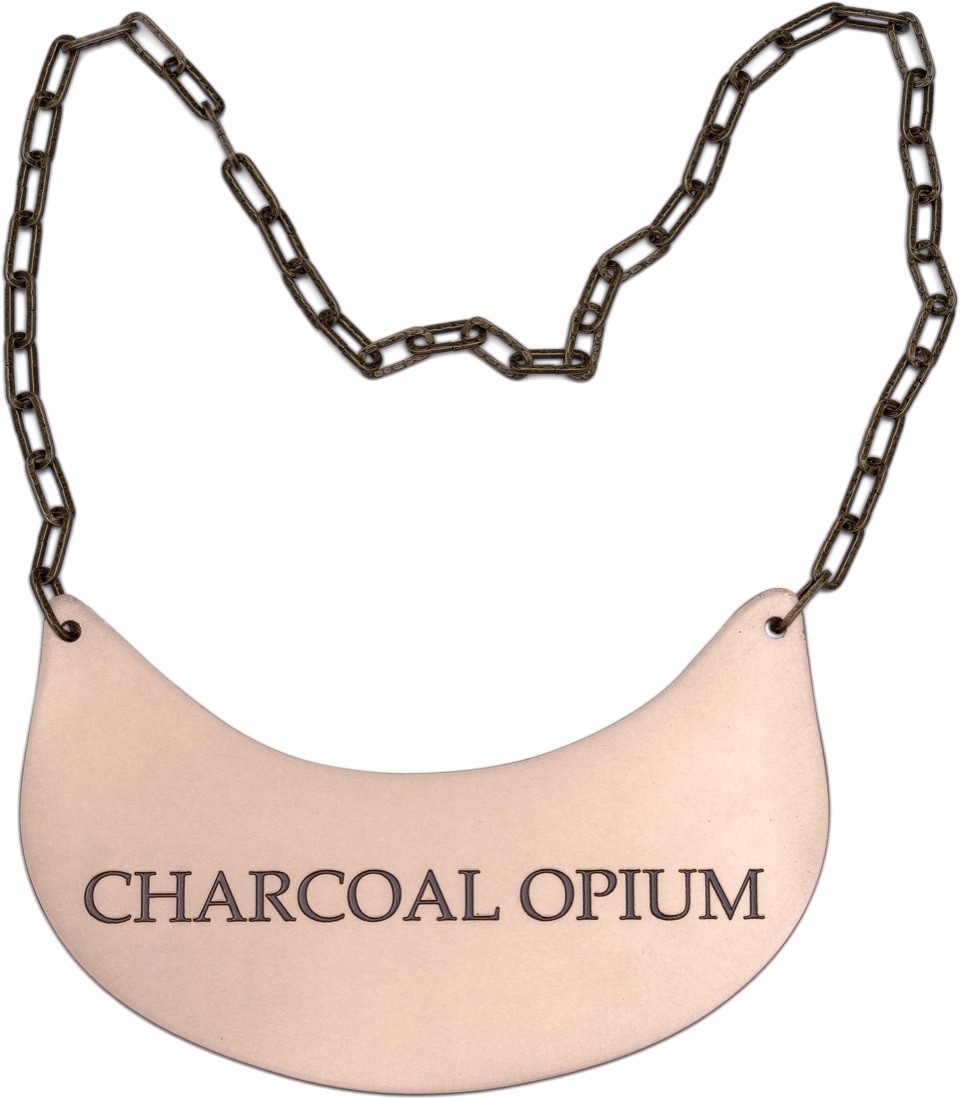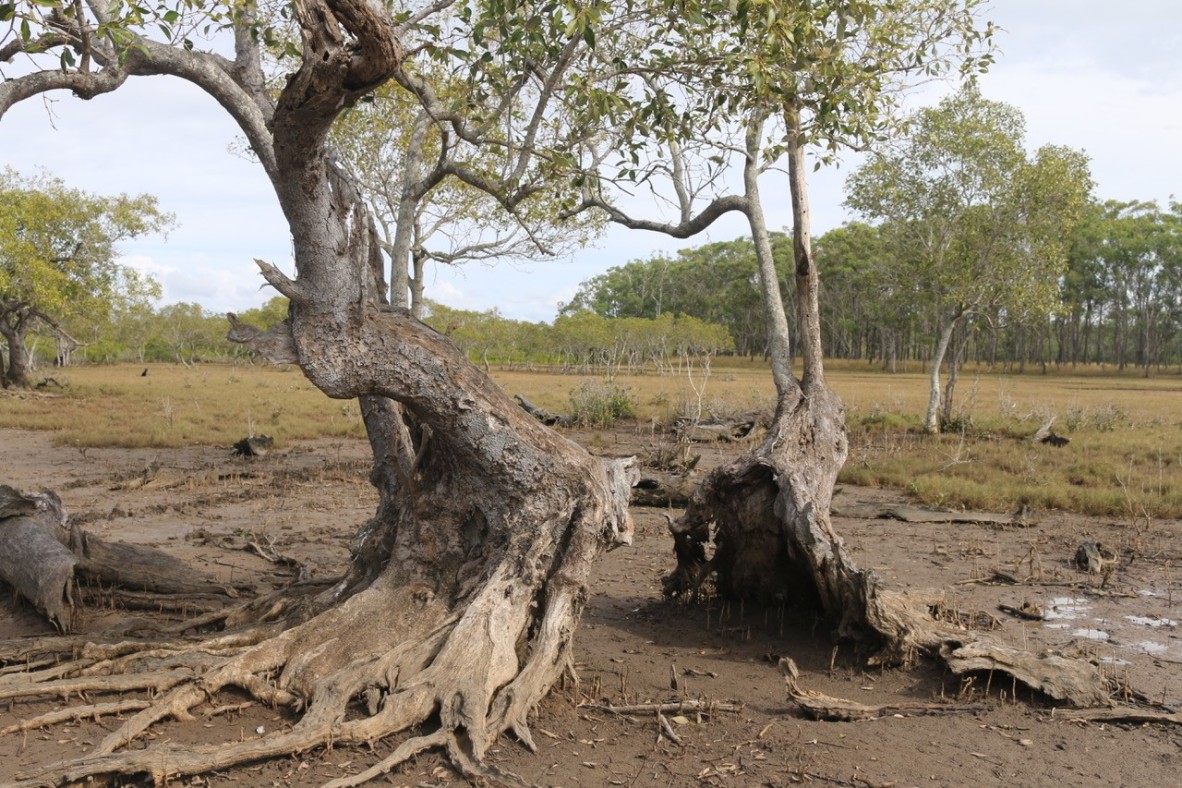Bogimbah Creek Mission: The First Aboriginal Experiment. New publication by Dr Fiona Foley.
By Fiona Foley, 2020 Monica Clare Research Fellow | 20 October 2021
This blog is written by 2020 Monica Clare Research Fellow, Dr Fiona Foley as part of her research project into the 52 Badtjala people taken from Maryborough to K'gari (Fraser Island) by Archibald Meston.
To speak to the contemporaneity of my art I have to speak to Australia’s history first. Making art and being commissioned to create public art for designated spaces is about engaging in a visual language. I ask myself what do I want to communicate to the general public? This is how the suite of seven reading rooms on Level 4 of the State Library Queensland came into being. The work titled Black Opium 2010 is layered with meaning straddling an analysis involving history, law, indigenous knowledge and creative research. It touches on all these strands.

Fiona Foley's public art installation Black Opium featuring the suspended infinity symbol and a suite of seven reading rooms.

Shrine Room in the State Library of Queensland's Black Opium installation by Fiona Foley. Photo by Carl Warner
Charcoal Opium is a term I came across when researching a piece of legislation titled The Aboriginals Protection and Restriction of the Sale of Opium Act, 1897. This is when opium has already been smoked leaving a residue ash. The ash was given to Aboriginal labourers in lieu of payment and to addict a people’s reliance on this substance. I have used the words Charcoal Opium on a breastplate - a construct of the British where this fanciful object was given to a designated Aboriginal leader of their choosing. Often engraved with a locale and name denoting a status such as king or queen when no such classification existed prior to English arrivals. I mimic a colonial trope by naming other realities for Indigenes. I draw out these incongruities in text and imagery.

Charcoal Opium, 2017. Fiona Foley
Time or deep time is something I explore in the new publication, Bogimbah Creek Mission: The First Aboriginal Experiment. I look back to my Badtjala Country during the 13th century when a young grey mangrove was taking root some 738 years ago on the muddy intertidal zone adjacent to the coursing pulse of the Mary River. I write:
Back in time the Badtjala people traversed to and from the mainland and the islands in the Great Sandy Strait with ease. What if I could be transplanted back to Thirteenth-century Australia, before the madness of the colonial project took hold? What images would I discover on the old land?”
Stepping forward into the present I had the opportunity this year to create a new photographic series titled The Magna Carta Tree. Various locations were selected on the mainland and K’gari for this project. The creative works and publication formed the overall project for the Monica Clare Research Fellowship. Both will play a vital role in bringing forward a Badtjala voice and historical point of view that had not previously been present in the states archives before now.

The Magna Carta Tree on K'gari.
Fiona Foleys photographic series features a mangrove tree named by cattle farmer, Lindsay Titmarsh, on whose property—Tandora—the tree has been living for over 700 years. The farmer named the tree after the Magna Carta—which was underwritten in 1215. It is about the same age as the tree on the farmer’s property. The Magna Carta is an infamous charter that has led much of Western law since its inception. The 39th Clause of the Magna Carta states:
No free man shall be seized or imprisoned, or stripped of his rights or possessions, or outlawed or exiled, or deprived of his standing in any other way, nor will we proceed with force against him, or send others to do so, except by the lawful judgement of his equals or by the law of the land. To no one will we sell, to no one deny or delay right or justice
Fiona's series creates its own rich and swirling narratives around the history of the pirri (mangrove tree in Badtjala language). The series references invasion, the contradictions inherent in law, and the ownership of land, all the while celebrating the rich cultural heritage of the Badtjala people and the land with which they are and have been connected to for millennia.
Credit: Fiona Foley: Veiled Paradise, QUT Art Museum.
The Monica Clare Research Fellowship is generously supported by donations to the Queensland Library Foundation.
Other blogs by Fiona Foley:
Commitment statement
This blog contains Aboriginal and/or Torres Strait Islander content, which has been made available in accordance with State Library of Queensland’s Aboriginal and Torres Strait Islander Collections Commitments.
2020 Monica Clare Research Fellow Fiona Foley: Research Reveals. Bogimbah Creek Mission. The First Aboriginal Experiment.
Comments
Your email address will not be published.
We welcome relevant, respectful comments.